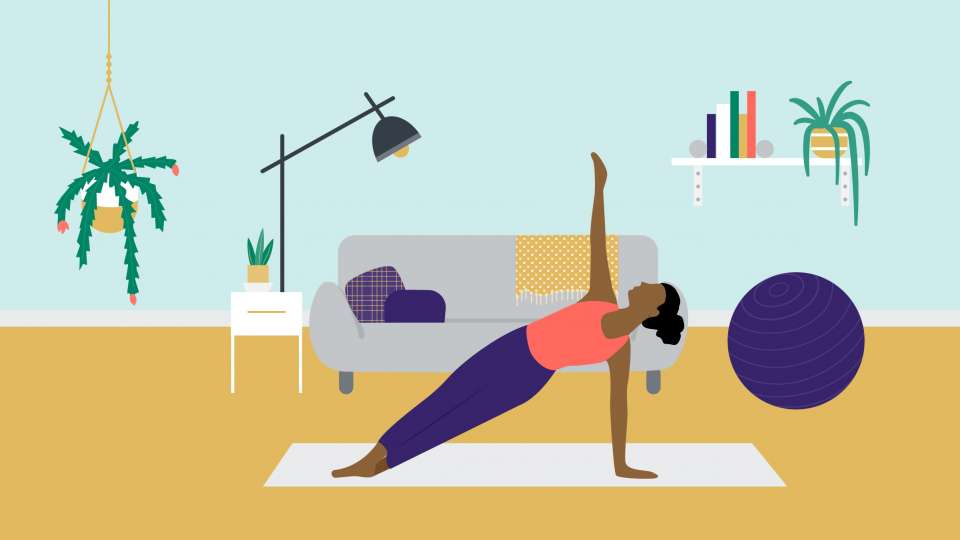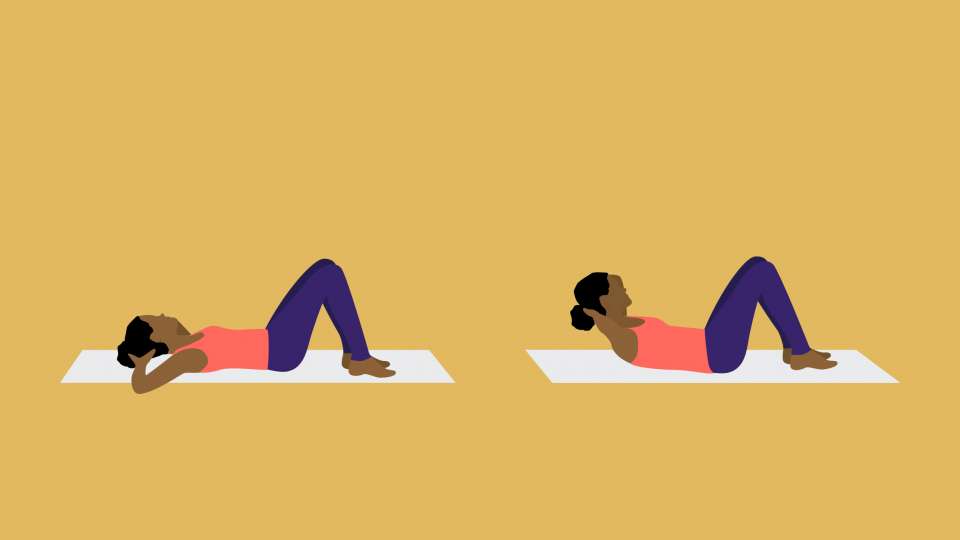
Whether you’re a gym rat trying to make up for the loss of your normal routine or just someone trying to stay healthy during the pandemic, you’ve probably looked up some online workout videos. And you’ve probably heard someone talk about core strength.
Core strength is one of those workout terms that gets thrown around a lot. But what does it actually mean and why is it important for your health?
What is your core, exactly?
In simple terms, your core is the center of your body (aka your torso), but it’s a little more complex than that.
The core is a group of muscles in the torso including the abdominal muscles, back paraspinal muscles, glutes, pelvic floor and diaphragm, says Dr. Eric Chen, a sports medicine specialist who sees patients at UW Neighborhood South Lake Union Clinic and at Harborview Medical Center.
“The job of the core is to stabilize the spine during movement, and it acts as a way to transfer and distribute forces in a proper manner so they don’t overload any one part of the body,” he explains.
Why building core strength is important
Since your core muscles help distribute weight and movement across your entire body, a strong core helps prevent any single spot from getting strained. Which means that a less-than-strong core does the opposite.
Signs of a weak core include poor posture and chronic lower back pain. You may also notice that your pelvis tilts forward when you walk.
Strengthening your core helps improve overall health by increasing stability and balance, improving posture and reducing back pain. For athletes, a strong core helps prevent overuse injuries and reduce knee injuries, plus helps prevent IT band syndrome in runners, Chen says.
Not to mention, strong core muscles make it easier to exercise and do everyday activities.
How to build core strength
Core strength isn’t just about how much power you have in your core, Chen says. Endurance, coordination and balance also factor in and are important parts of building core strength that you should keep in mind.
Before trying core exercises, the first step is to learn how to activate your core muscles, Chen explains.
“It can be more challenging than you might think if you’ve never intentionally thought about how to activate your abs when you’re just sitting,” he says.
Activating a muscle may sound like a fancy fitness term, but all it means is tightening your muscles in a way that actually uses them without straining or preventing normal breathing or movement.
There are several ways to learn how to activate your core. If you like a do-it-yourself approach, Chen recommends searching for core activation tutorials on YouTube or taking an online Pilates class.
If you’d rather work one-on-one with an expert, you can schedule an evaluation with a physical therapist or a sports medicine specialist.
Three core exercises to try
Whether you’ve done core exercises before or are trying them for the first time, here are three exercises that will help you build a stronger core.
One thing to note: If you’re a beginner, make sure you go at your own pace and don’t overdo it.
“For a beginner I would set a goal of 3 minutes per exercise,” Chen says.
Once you feel that you’ve mastered this amount of time, try gradually increasing how many minutes you do each exercise for, Chen recommends. That way, you can safely build up core strength over time.
And don’t forget to activate your core muscles during the exercises.
Plank
Perhaps the most classic core exercise is the plank. To do a plank, lie down on your stomach, then push your body up on your toes and forearms. Your elbows, arms and shoulders should be lined up while your back is straight (not arched) and your stomach is tucked in. Then hold that position.
“Start with one set of 10 seconds, work your way up to 15, 20, or 30 seconds and then a minute,” Chen recommends.
To make a plank easier, you can bend your knees and put your weight on them instead of on your toes. If instead you want target a different part of your core, such as your obliques, you can try doing a side plank.
Crunches
Many of us have done a crunch or two in our lives. To make sure you’re getting the most from them, lay on your back with the soles of your feet against the floor, knees bent. Place your hands behind your head and pull your upper body toward your knees while keeping your lower back on the floor.
“You want to try to flatten the curve of your back against the floor, to ensure your spine and pelvis are in line and in a neutral position as opposed to tilted,” Chen advises.
This is where core activation comes in: Make sure you’re pulling yourself up from your core, rather than your neck or shoulders.
“Crunches should be done in a slow and controlled manner, as opposed to speed which can lead to injury,” Chen says.
Crunches are different from sit-ups, where you actually sit all the way up. If you get good at crunches, try sit-ups for some variation.
Bird dogs
For this core exercise, kneel on the floor with the palms of your hands pressed against the floor, keeping your back flat. This is called a quadruped position, where your knees line up under your hips and your hands line up under your shoulders.
Extend one leg out behind you, then, with that leg still out, extend your opposite-side arm out in front of you. Hold for a moment before coming back to the quadruped position, then switching to the other leg and arm.
“Adding an exercise ball makes it more of a challenge to the core because of the instability,” Chen says.
The cool-down
It’s normal to feel a little sore after a good workout, Chen says. It could even last a few days. But if you have lingering pain or discomfort that limits your ability to continue exercising, it might be time to talk with a doctor.
Building core strength is helpful for your overall health and fitness, and it isn’t hard to do: You can start small and gradually build up your workouts.

 Healthy ideas for your inbox
Healthy ideas for your inbox








